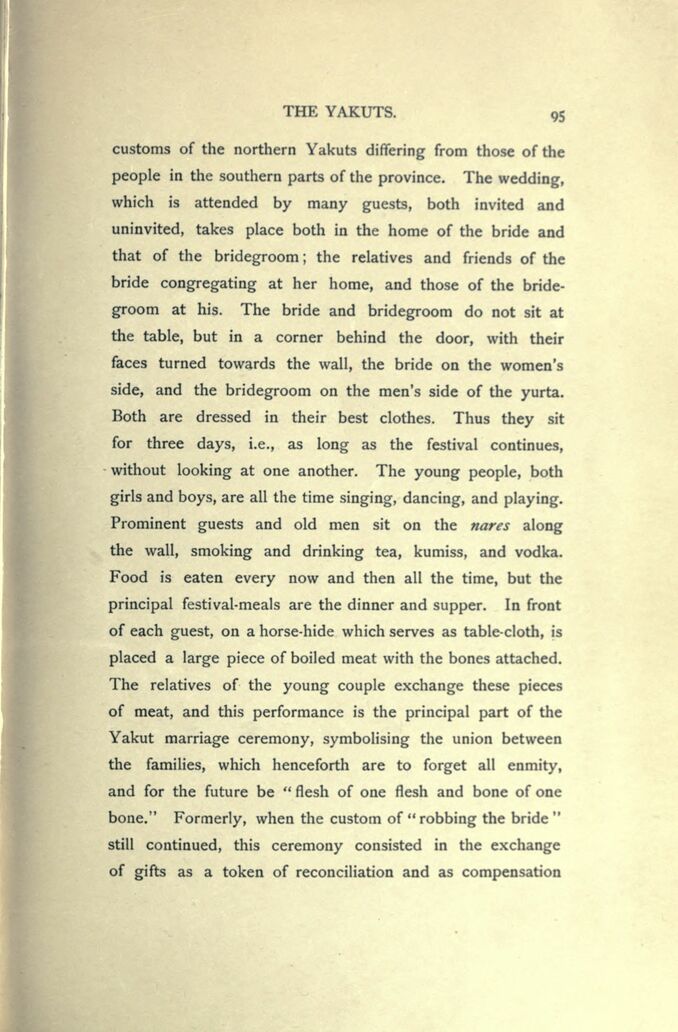
Full resolution (JPEG) - On this page / på denna sida - IX. The Yakuts

<< prev. page << föreg. sida << >> nästa sida >> next page >>
Below is the raw OCR text
from the above scanned image.
Do you see an error? Proofread the page now!
Här nedan syns maskintolkade texten från faksimilbilden ovan.
Ser du något fel? Korrekturläs sidan nu!
This page has been proofread at least once.
(diff)
(history)
Denna sida har korrekturlästs minst en gång.
(skillnad)
(historik)
customs of the northern Yakuts differing from those of the
people in the southern parts of the province. The wedding,
which is attended by many guests, both invited and
uninvited, takes place both in the home of the bride and
that of the bridegroom; the relatives and friends of the
bride congregating at her home, and those of the
bridegroom at his. The bride and bridegroom do not sit at
the table, but in a corner behind the door, with their
faces turned towards the wall, the bride on the women’s
side, and the bridegroom on the men’s side of the yurta.
Both are dressed in their best clothes. Thus they sit
for three days, i.e., as long as the festival continues,
without looking at one another. The young people, both
girls and boys, are all the time singing, dancing, and playing.
Prominent guests and old men sit on the nares along
the wall, smoking and drinking tea, kumiss, and vodka.
Food is eaten every now and then all the time, but the
principal festival-meals are the dinner and supper. In front
of each guest, on a horse-hide which serves as table-cloth, is
placed a large piece of boiled meat with the bones attached.
The relatives of the young couple exchange these pieces
of meat, and this performance is the principal part of the
Yakut marriage ceremony, symbolising the union between
the families, which henceforth are to forget all enmity,
and for the future be “flesh of one flesh and bone of one
bone.” Formerly, when the custom of “robbing the bride”
still continued, this ceremony consisted in the exchange
of gifts as a token of reconciliation and as compensation
<< prev. page << föreg. sida << >> nästa sida >> next page >>